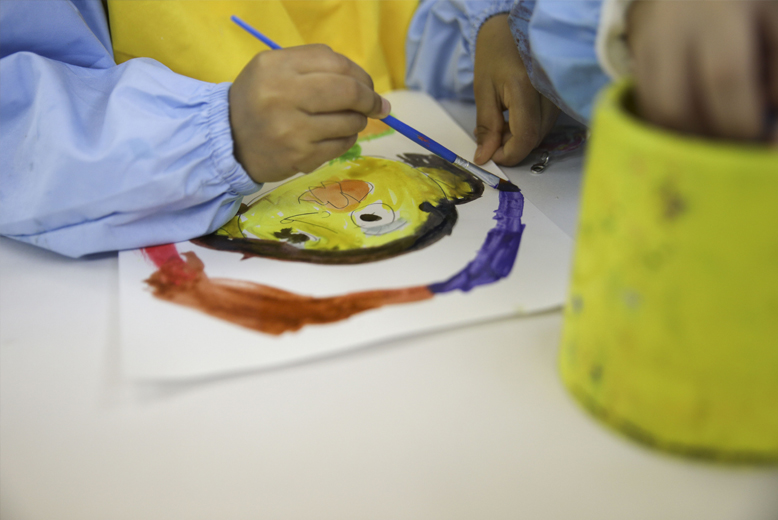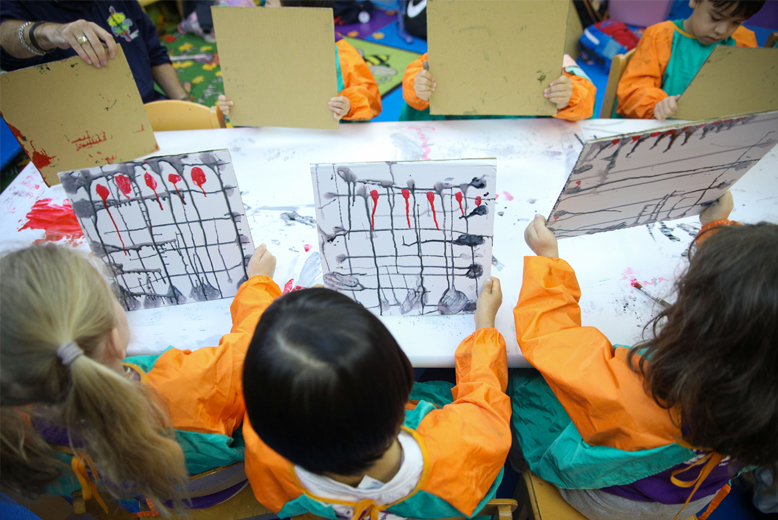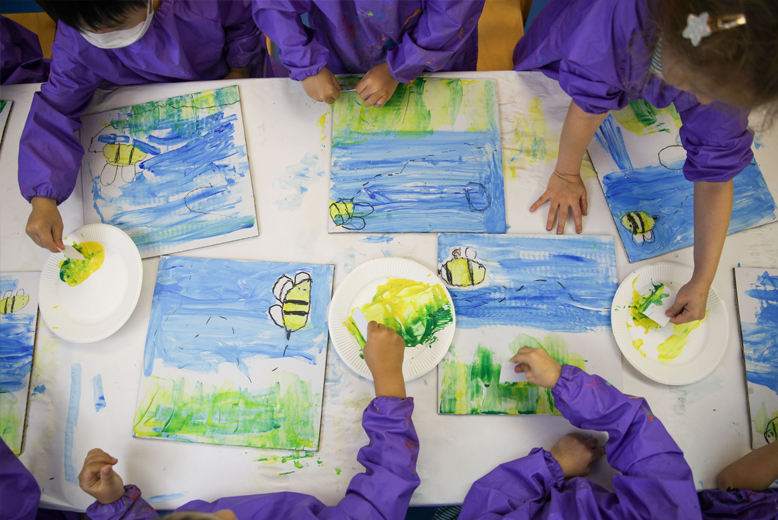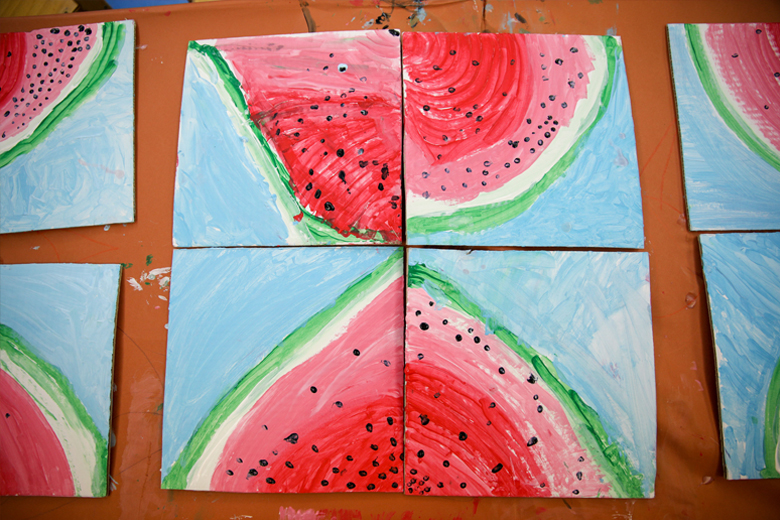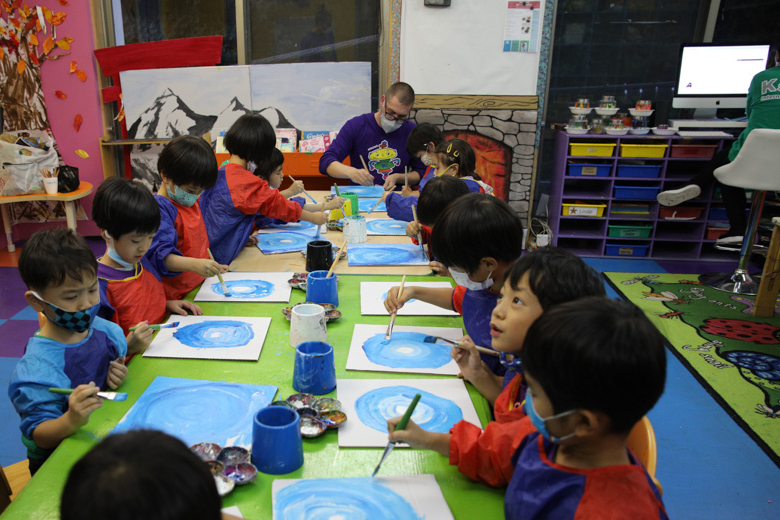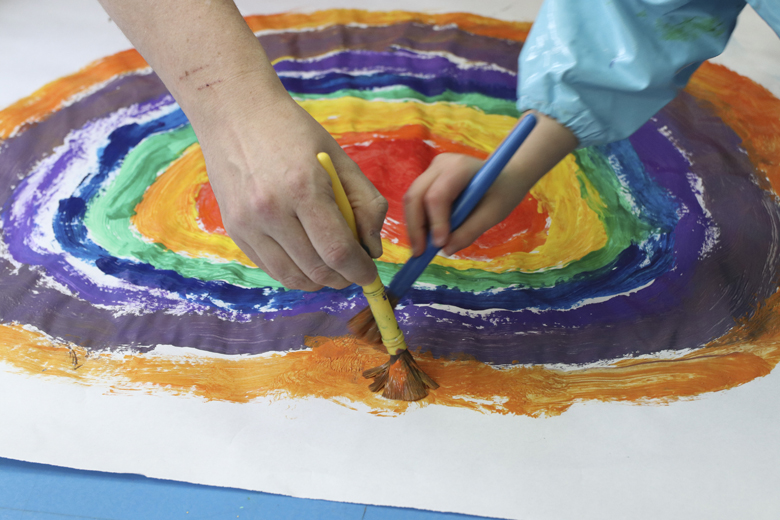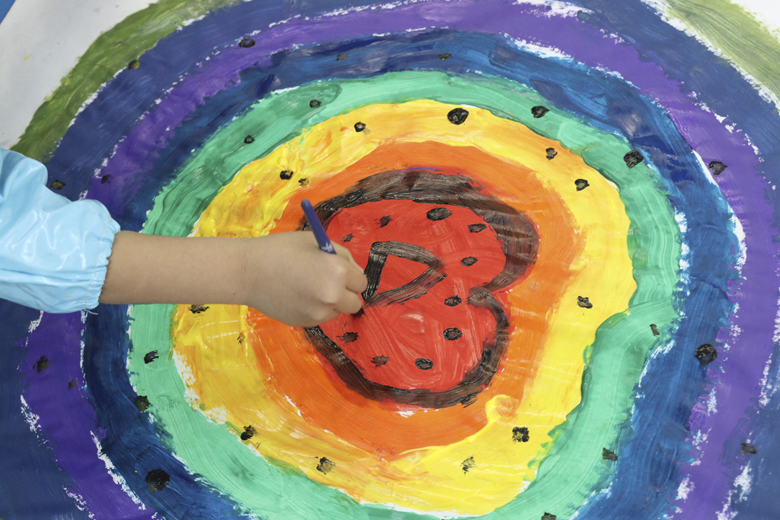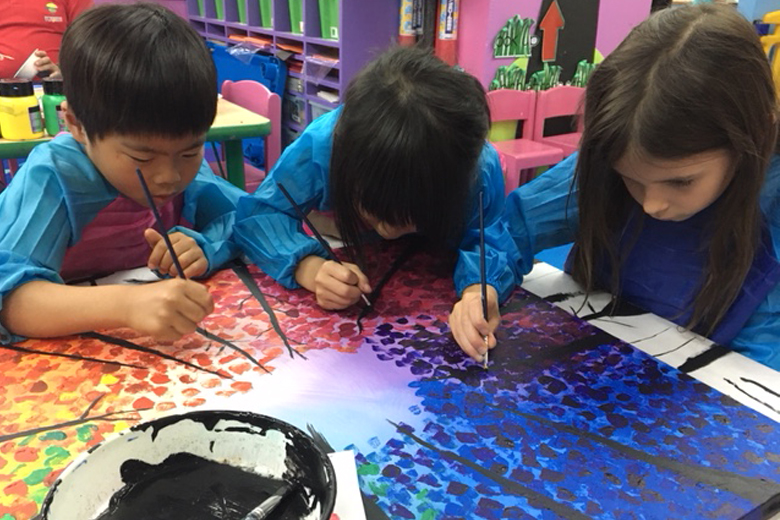Painting
Painting (as well as any creative learning) helps students develop in important observable areas like fine-motor skills and hand-eye coordination. However, creative learning is also beneficial in many less obvious ways, such as observation skills, critical thinking, problem solving and confidence.
Painting is taught in a safe and non-judgemental environment. Children experiment with cause-and-effect when using different painting implements like brushes, sponges and fingers to make marks on a canvas, or by observing the results of mixing colours.
Painting and other sensory activities help to fire the senses, making for vivid memories and more intense learning and self-regulation. Many young students can be quick to give up when faced with a challenge or with something that doesn't have an immediate effect. Some of our painting activities are open-ended, emphasizing the process and the experience rather than the final result. This helps students find the confidence to try and experiment with new and challenging situations.
Life isn’t colour-by-number or craft-kit-style. Like our avant-garde painting class, it can be messy and constantly changing. We give kids the chance to create, helping their brain learn how to think without boundaries. This will help them for their entire life, whether they become an engineer, an artist or dream up something else amazing that they want to be.





